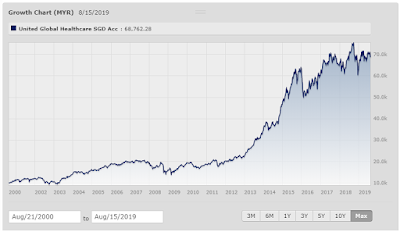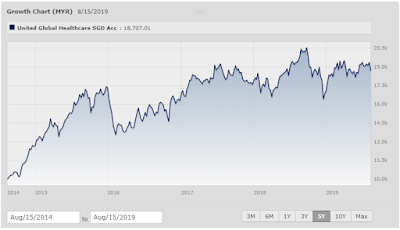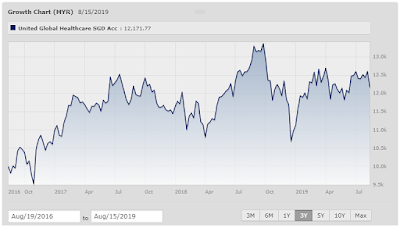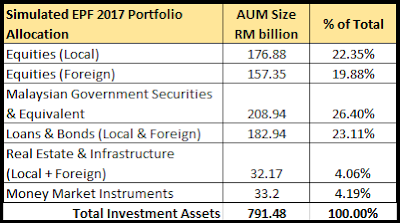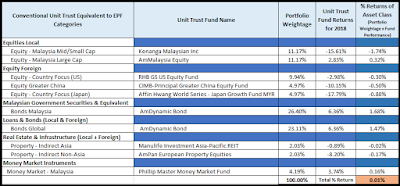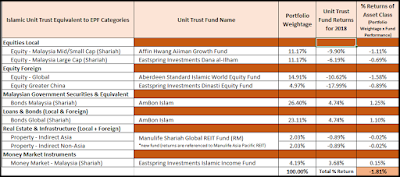- Step 1: Log into your i-Akaun @ www.kwsp.gov.my
- Step 2: Click on the INVESTMENT tab.
- Step 3: Mouse over the TRANSACTIONS tab and click on the BUY tab. This page will also provide details of the Eligible Investment Amount and Available Investment Amount. Ensure that you have an Available Investment Amount of at least RM1,000.
- Step 4: Select the FMI and FUND NAME to invest and key in the investment amount. (Study the Fund Documents carefully to understand a fund’s risk and return profile. Click on the VIEW FUND INFO tab, then click on the FUND NAME to view the FUND DOCUMENTS.)
- Step 5: If you desire to invest in multiple unit trust funds, select another FUND NAME under the same FMI. You can only buy funds offered by the same FMI in a single transaction. Separate transactions must be executed if you want to invest in unit trust funds offered by different FMIs.
- Step 6: For each fund, enter an investment AMOUNT that is above the Minimum Investment Amount (or Minimum Subsequent Investment Amount). The Total Investment Amount for the fund(s) must be at least RM1,000.
- Step 7: Click on the PROCEED TO CHECKOUT button.
- Step 8: Click on the BUY button under the FMI or IUTA offering the selected unit trust fund(s).
- Step 9: After understanding and checking the disclaimer, click on the OK button. You will be redirected to the FMI/IUTA platform to complete the transaction.
- Step 3: Mouse over the FUND TOOLS tab and click on the FUND SELECTOR tab.
- Step 4: Filter the unit trust funds according to various criteria provided. Then, click on the GENERATE TABLE button.
- Step 5: Analyse the unit trust funds under different tabs. (Study the Fund Documents carefully under the FUND INFO TABLE tab to understand a fund’s risk and return profile.)
- Step 6: Select desired unit trust funds. You can only select funds offered by the same FMI in a single transaction.
- Step 7: Click on the BUY button at the bottom of the page.
- Step 8: For each fund, enter an investment AMOUNT that is above the Minimum Investment Amount (or Minimum Subsequent Investment Amount). The Total Investment Amount for the fund(s) must be at least RM1,000.
- Step 9: Click on the PROCEED TO CHECKOUT button.
- Step 10: Click on the BUY button under the FMI or IUTA offering the selected unit trust fund(s).
- Step 11: After understanding and checking the disclaimer, click on the OK button. You will be redirected to the FMI/IUTA platform to complete the transaction.
- Step 1: Log into your i-Akaun @ www.kwsp.gov.my
- Step 2: Click on the INVESTMENT tab.
- Step 3: Mouse over the TRANSACTIONS tab and click on the REDEEM/SWITCH tab.
- Step 4: Select the unit trust fund(s) to redeem or switch. Members can only redeem/switch fund(s) offered by the same FMI or IUTA in a single transaction.
- Step 5: Click on the PROCEED TO REDEEM button or PROCEED TO SWITCH button.
- Step 6: After understanding and checking the disclaimer, click on the OK button. You will be redirected to the FMI/IUTA platform to complete the transaction.
Buy: Yes. You can select multiple unit trust funds offered by the same FMI when transacting through the i-Akaun (Member), before being redirected to the FMI/IUTA platform to complete the transaction.
Sell: Yes. You can select multiple unit trust funds offered by the same FMI or IUTA when transacting through the i-Akaun (Member), before being redirected to the FMI/IUTA platform to complete the transaction.
Switch: Yes. You can select multiple unit trust funds offered by the same FMI or IUTA when transacting through the i-Akaun (Member), before being redirected to the FMI/IUTA platform to complete the transaction.
Additional requirements and/or fees/charges may apply when members are completing the transaction on the FMI/IUTA platform.
Can I switch between approved unit trust funds offered by different FMIs?
No. Switching is only allowed between funds offered by the same FMI, subject to a switching fee (if any).
**************************************************
REGISTER an IUTA account (eUnittrust) now for FREE
- Click HERE
How to register an eUnittrust account?
- Click HERE


